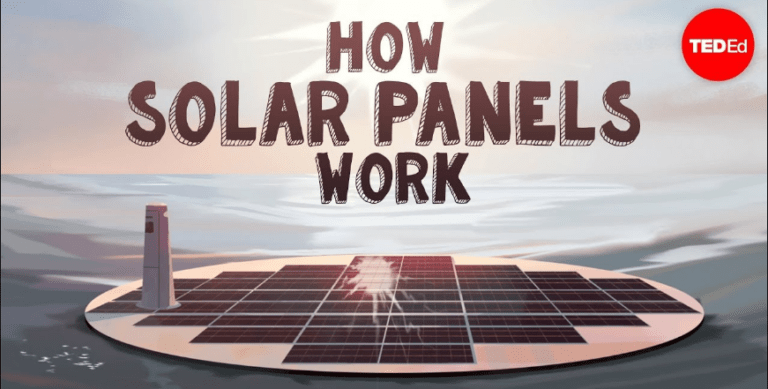How do solar panels work?
What Is Solar Energy?
Simply put, solar is the most abundant source of energy on Earth. About 173,000 terawatts of solar energy strike the Earth at any given time – more than 10,000 times the world’s total energy needs.
By capturing the sun’s energy and turning it into electricity for your home or business, solar energy is a key solution in combating the current climate crisis and reducing our dependence on fossil fuels.
How Does Solar Energy Work?
Our sun is a natural nuclear reactor. It releases tiny packets of energy called photons, which travel the 93 million miles from the sun to Earth in about 8.5 minutes. Every hour, enough photons impact our planet to generate enough solar energy to theoretically satisfy global energy needs for an entire year.
Currently photovoltaic power accounts for only five-tenths of one percent of the energy consumed in the United States. But solar technology is improving and the cost of going solar is dropping rapidly, so our ability to harness the sun’s abundance of energy is on the rise.
In 2017,the International Energy Agency showed that solar had become the world’s fastest-growing source of power – marking the first time that solar energy’s growth had surpassed that of all other fuels. Since then solar has continued to grow and break records around the globe.
How Does Weather Affect Solar Energy?
Weather conditions can impact the amount of electricity a solar system produces, but not exactly in the way you might think.
Perfect conditions for producing solar energy include a clear sunny day, of course. But like most electronics, solar panels are actually more efficient in cold weather than warm weather. This allows the panel to produce more electricity in the same amount of time. As the temperature rises, the panel generates less voltage and produces less electricity.
But even though solar panels are more efficient in cold weather, they don’t necessarily produce more electricity in the winter than in summer. Sunnier weather often occurs in the warmer summer months. In addition to fewer clouds, the sun is usually out for more of the day. So even though your panels may be less efficient in warm weather, they’ll still likely produce more electricity in summer than in winter.
Do Some States Get More Solar Energy Than Others?
Obviously, some states get more sun than others. So the real question is: if weather can affect solar energy production, are some states better candidates for solar energy than others? The short answer is yes, but not necessarily because of weather.
Take clouds for example. Anyone who has been sunburned on a cloudy day knows that solar radiation penetrates through clouds. For that same reason, solar panels can still produce electricity on cloudy days. But depending on the cloud cover and the quality of the solar panels, the efficiency of the solar panels electricity production commonly drops from 10 to 25 percent or more compared to a sunny day.
In other words, solar power can still work well in typically cloudy, cold locations. New York, San Francisco, Milwaukee, Boston, Seattle – all of those cities experience inclement weather, from rain and fog to blizzards, yet they’re also cities where people see huge savings by getting solar.
No matter where you live, solar energy can be an excellent investment and an excellent way to help combat climate change. How much you’ll save – and how quickly you’ll see a return on your investment in a particular state – depends on many factors, like the cost of electricity, solar incentives available, net metering, and the quality of your solar panels.
How Do Solar Panels Work?
When photons hit a solar cell, they knock electrons loose from their atoms. If conductors are attached to the positive and negative sides of a cell, it forms an electrical circuit. When electrons flow through such a circuit, they generate electricity. Multiple cells make up a solar panel, and multiple panels (modules) can be wired together to form a solar array. The more panels you can deploy, the more energy you can expect to generate.
What are Solar Panels Made of?
Photovoltaic (PV) solar panels are made up of many solar cells. Solar cells are made of silicon, like semiconductors. They are constructed with a positive layer and a negative layer, which together create an electric field, just like in a battery.
How Do Solar Panels Generate Electricity?
PV solar panels generate direct current (DC) electricity. With DC electricity, electrons flow in one direction around a circuit. This example shows a battery powering a light bulb. The electrons move from the negative side of the battery, through the lamp, and return to the positive side of the battery.
With AC (alternating current) electricity, electrons are pushed and pulled, periodically reversing direction, much like the cylinder of a car’s engine. Generators create AC electricity when a coil of wire is spun next to a magnet. Many different energy sources can “turn the handle” of this generator, such as gas or diesel fuel, hydroelectricity, nuclear, coal, wind, or solar.
AC electricity was chosen for the U.S. electrical power grid, primarily because it is less expensive to transmit over long distances. However, solar panels create DC electricity. How do we get DC electricity into the AC grid? We use an inverter.
The Earth intercepts a lot of solar power: 173,000 terawatts. That’s 10,000 times more power than the planet’s population uses. So is it possible that one day the world could be completely reliant on solar energy? Richard Komp examines how solar panels convert solar energy to electrical energy.
Do not forget to share your opinion with us to provide you with the best posts !




0 Comments